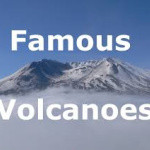Category: Geography
Created by: farooq92
Number of Blossarys: 47
Mount Pelée, standing more than 4,500 feet high on the French Caribbean island of Martinique, erupted violently in May 1902, killing nearly 30,000 people — effectively the entire port city of St. Pierre. The catastrophe was so devastating that the term pelean — to describe that particular kind of ash, gas and fiery cloud eruption — became part of volcanic vernacular. There had been warnings of steam, light earth shocks and raining ash, but they were ignored. After the town was wiped out, Pelée went dormant for some months, until geologists discovered a lava dome, dubbed the tower of Pelée, that rose to more than 1,000 feet above the crater floor before eventually crumbling in March 1903.
Gunung Pelee, berdiri lebih dari 4.500 kaki tinggi di pulau Karibia Prancis Martinique, meletus keras pada bulan Mei 1902, menewaskan hampir 30.000 orang-efektif seluruh pelabuhan kota St. Pierre. Bencana sehingga menghancurkan yang pelean istilah — untuk menggambarkan semacam tertentu abu, gas dan awan yang berapi-api letusan — menjadi bagian dari vernakular vulkanik. Telah ada peringatan Uap, cahaya bumi guncangan dan hujan abu, tapi mereka diabaikan. Setelah kota dihapuskan, Pelee pergi aktif selama beberapa bulan, sampai geolog menemukan sebuah kubah lava yang dijuluki menara Pelee, yang meningkat menjadi lebih dari 1.000 kaki di atas lantai kawah sebelum akhirnya runtuh pada Maret tahun 1903.
The eruption was small — in volcanic terms, that is — producing only about 3% of the ash ejected by Mount St. Helens in 1980. Instead, it was the mudflows that made Colombia's 1985 Nevado del Ruiz explosion the second deadliest in the 20th century and the fourth deadliest in recorded history. The volcano has been blowing its top since the Pleistocene era and has erupted three times in modern history, including in 1595 and 1845. But on Nov. 13, 1985, a relatively small explosion unleashed floods that swept away 1,500 people on one side of the mountain. On the other side was the town of Armero, the site of the worst destruction. 25-m.p.h. lahars (volcanic mudflows) obliterated the town and blanketed it in gray muck. When the landslides subsided, 23,000 people had died and damage was estimated at $1 billion — one-fifth of Colombia's GNP at the time.
Letusan ini kecil-dalam istilah vulkanik, itulah — memproduksi hanya sekitar 3% abu yang dikeluarkan oleh Gunung St. Helens pada tahun 1980. Sebaliknya, itu adalah lumpur yang dibuat Kolombia ' s 1985 Nevado del Ruiz ledakan mematikan kedua abad dan mematikan keempat dalam mencatat sejarah. Gunung berapi telah meniup atas sejak era Pleistosen berada dan telah meletus tiga kali dalam sejarah modern, termasuk di 1595 dan 1845. Tetapi pada 13 November 1985, sebuah ledakan yang relatif kecil mengeluarkan banjir yang tersapu 1.500 orang pada satu sisi gunung. Di sisi lain adalah kota Armero, situs pemusnahan terburuk. lahars 25-mph (vulkanik Lumpur) dihapuskan kota dan diselimuti dalam kotoran abu-abu. Ketika tanah longsor mereda, 23.000 orang meninggal dan kerusakan telah diperkirakan pada $1 miliar — seperlima dari Kolombia ' s GNP saat itu.


 English (EN)
English (EN)